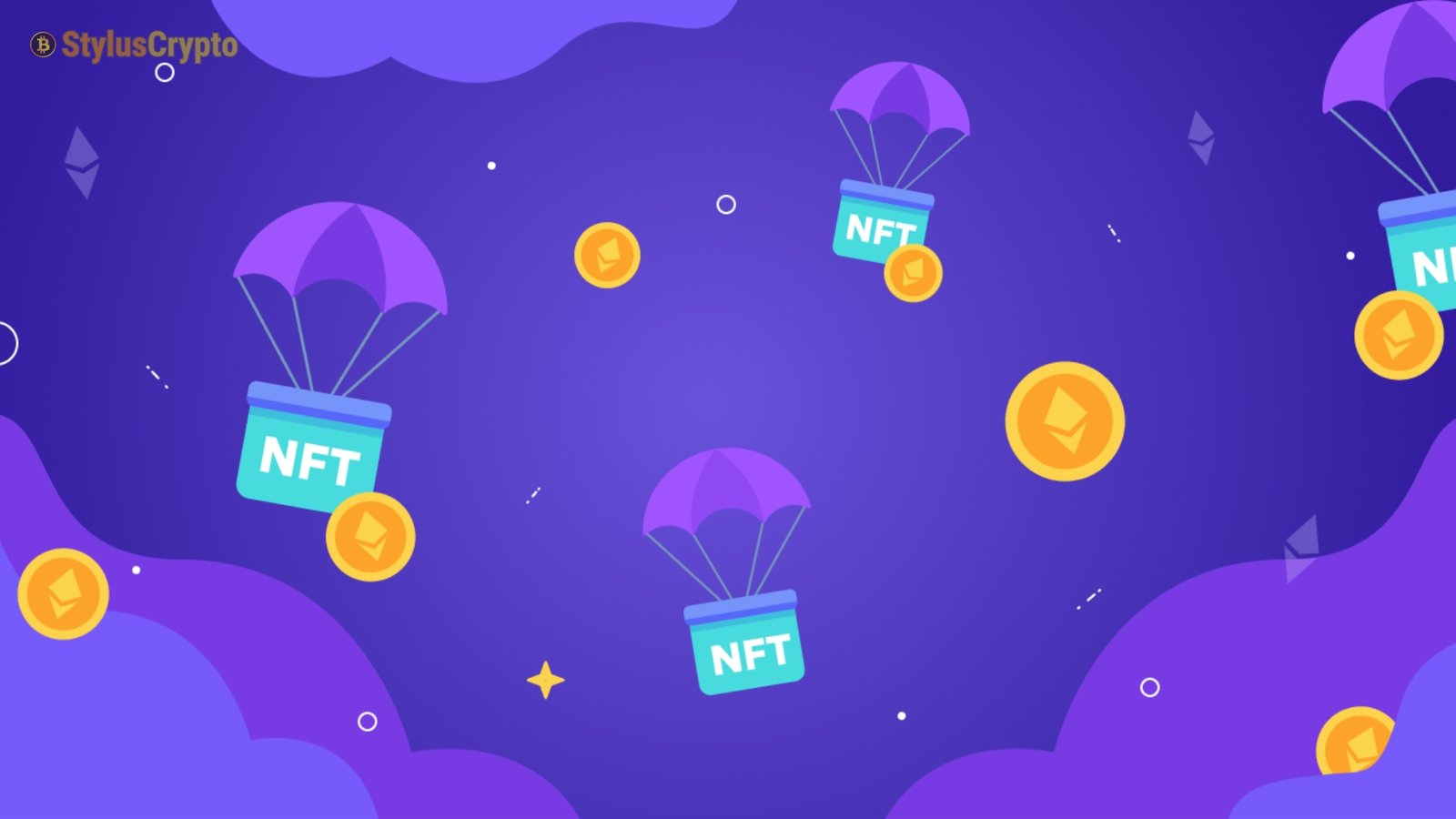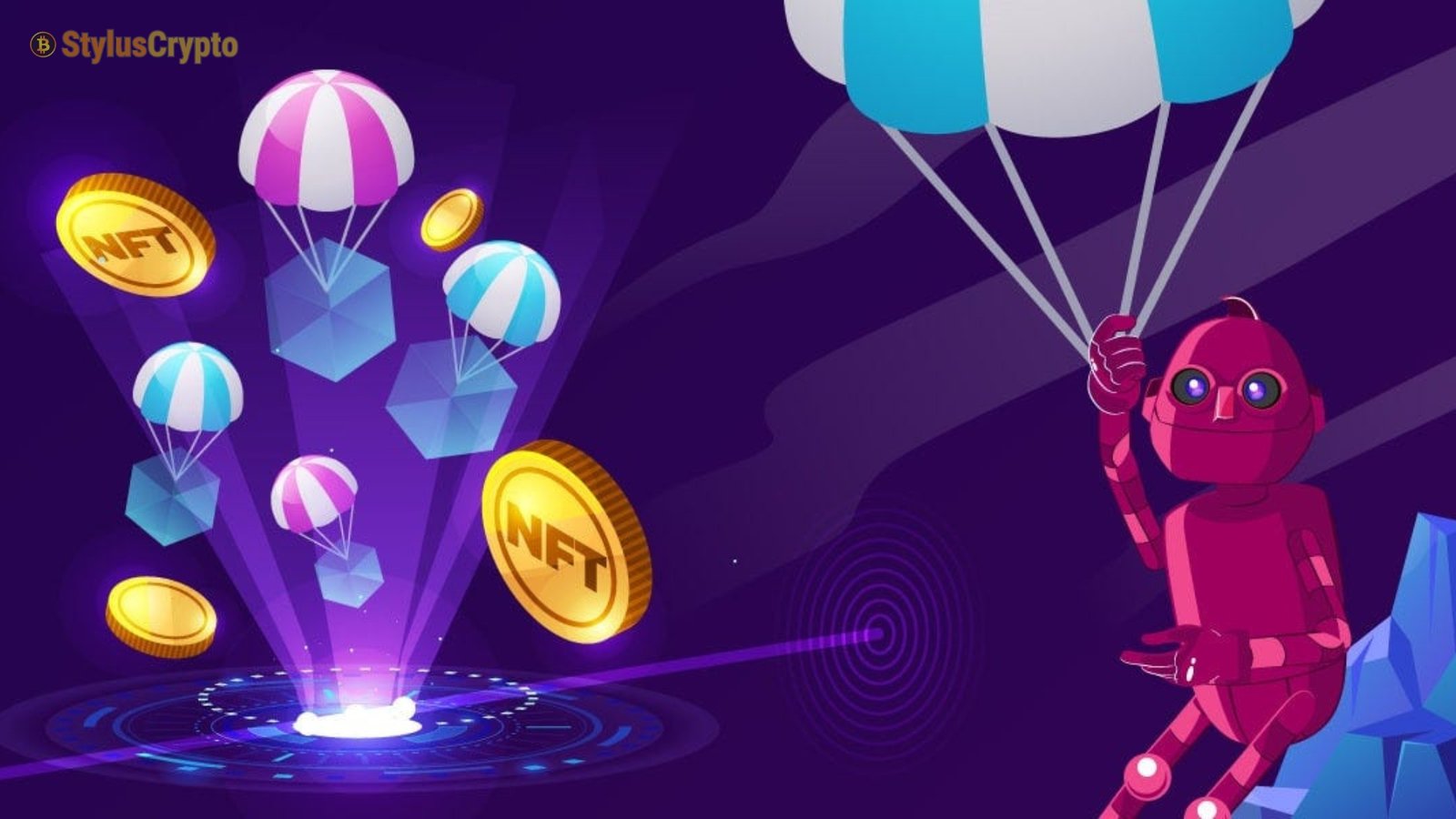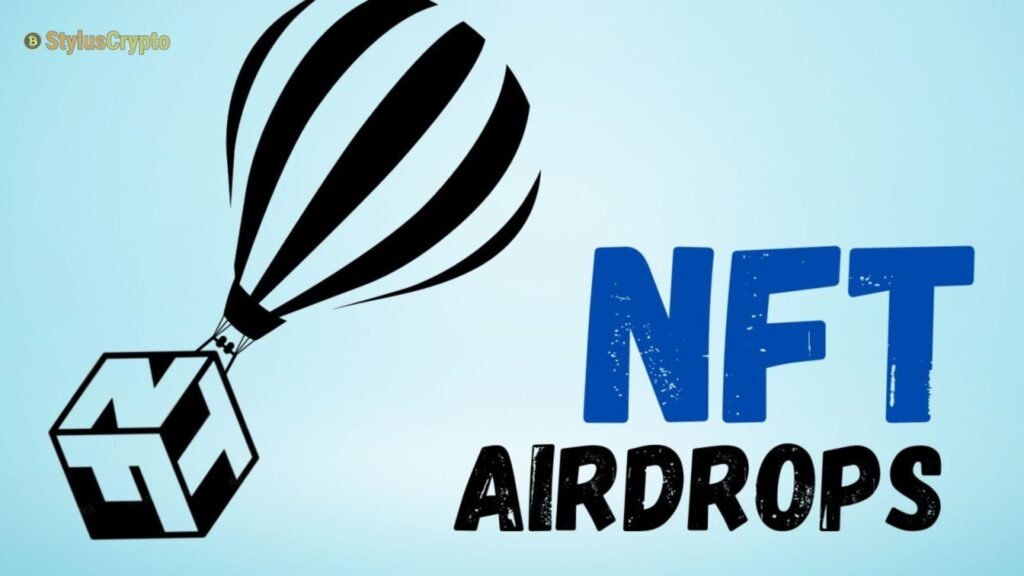NFT Airdrops: The NFT (Non-Fungible Token) landscape has experienced rapid growth and innovation over the past few years, and one of the most intriguing developments within this space is the concept of NFT airdrops. Originally derived from the broader cryptocurrency market, where tokens were distributed for free to promote projects or reward early adopters, airdrops have been reimagined in the NFT ecosystem. This article delves into NFT airdrops’ evolution, current trends, and future potential, offering a comprehensive analysis for enthusiasts and investors alike.
What Are NFT Airdrops?
An NFT airdrop refers to the distribution of NFTs to a particular group of people, often as a promotional tactic or as a reward for holding specific tokens or being part of a community. These airdrops can vary in value and rarity, from highly sought-after collectibles to less valuable items designed to engage users or drive traffic to a project.
NFT airdrops can be categorized into several types, including:
- Promotional Airdrops: These are used as marketing tools to create buzz around a new project. For example, a new NFT project might drop free tokens to early adopters or community members to generate excitement and attract more users.
- Holder Airdrops: These airdrops reward existing holders of a specific NFT or cryptocurrency. For instance, owning a particular NFT might qualify you to receive additional tokens or new NFTs from the same project.
- Collaborative Airdrops: Sometimes, projects collaborate, allowing NFT holders from one project to receive NFTs from another. This cross-pollination can introduce users to new projects and foster community growth.
- Utility Airdrops: These airdrops provide NFTs that grant specific utilities within a platform, such as access to exclusive content, participation in governance, or entry to special events.
The Role of Community in NFT Airdrops
One of the defining characteristics of NFT airdrops is the emphasis on community engagement. Unlike traditional marketing strategies, which often rely on paid advertisements or influencers, NFT airdrops leverage the power of the community. Projects distribute NFTs to loyal supporters, early adopters, or members of specific online communities, creating a sense of exclusivity and belonging.
This community-centric approach is a powerful marketing tool and a way to build long-term loyalty. By rewarding community members with valuable NFTs, projects can foster a dedicated user base that is more likely to support the project in the future, whether through continued participation or financial investment.
Current Trends in NFT Airdrops
As the NFT space matures, airdrop strategies are becoming increasingly sophisticated. Here are some of the latest trends shaping the world of NFT airdrops:
Gamification
Many projects are integrating gamification elements into their airdrop strategies. For example, users might need to complete specific tasks, such as participating in a scavenger hunt or solving puzzles, to qualify for an airdrop. This approach not only increases engagement but also adds an element of fun to the process.
Utility-Driven Airdrops
Utility airdrops are becoming more prevalent as projects seek to offer tangible benefits to their communities. These NFTs might grant holders access to exclusive content, special privileges, or governance rights within a decentralized autonomous organization (DAO). This trend aligns with the broader shift towards utility-focused NFTs, where ownership confers real-world benefits beyond mere collectibility.
Collaborative Airdrops
Cross-project collaborations are rising, with projects partnering to distribute NFTs across different communities. These collaborations can introduce users to new ecosystems and create synergies between projects, benefiting both parties.
Metadata and Dynamic Airdrops
Some projects are experimenting with dynamic NFTs, where the metadata of the airdropped tokens can change over time. For instance, an NFT might evolve or unlock new features based on the holder’s actions or the passage of time. This adds a layer of interactivity and personalization, making the airdrop experience more engaging.
Decentralized Airdrop Platforms
With the rise of decentralized platforms, some projects are using them to automate and distribute airdrops more transparently and fairly. These platforms often use smart contracts to ensure the airdrop process is trustless and verifiable, reducing the risk of fraud or manipulation.
Challenges and Criticisms
While NFT airdrops offer numerous benefits, they are not without challenges and criticisms. One of the primary concerns is the potential for airdrop fatigue. As the number of NFT projects and airdrops increases, users may become overwhelmed by the sheer volume of distributed tokens, leading to decreased engagement and interest.
Moreover, not all airdrops are created equal. Some may have little to no value, either because the project fails to gain traction or the NFTs are of low quality. This can make users feel disillusioned or exploited, particularly if they are required to complete tasks or pay gas fees to receive the airdrop.
Another challenge is the issue of fairness and distribution. Sometimes, airdrops are targeted at specific groups of people, such as early adopters or whales, leading to accusations of favoritism or exclusion. Ensuring that airdrops are distributed fairly and transparently is crucial for maintaining trust within the community.
The Future of NFT Airdrops
As the NFT space continues to evolve, so will the strategies and methodologies behind NFT airdrops. Here are a few predictions for the future of this dynamic aspect of the NFT ecosystem:
- Increased Personalization: Future airdrops will likely become more personalized, with projects using data and analytics to tailor airdrops to individual users’ preferences and behaviors. This could involve everything from customized NFTs to airdrops that adapt based on the recipient’s engagement with the project.
- Integration with the Metaverse: As the metaverse concept gains traction, NFT airdrops could become a key component of virtual worlds. For example, users might receive airdrops to participate in virtual events or interact with specific digital environments. These airdrops could include virtual items, avatars, or even property within the metaverse.
- Sustainability and Eco-Friendly Airdrops: With growing concerns about blockchain technology’s environmental impact, we may see the rise of eco-friendly airdrops. Projects could offset their airdrops’ carbon footprint by donating to environmental causes or using more sustainable blockchain networks.
- Legal and Regulatory Developments: As NFT airdrops continue to grow in popularity, they will likely attract more attention from regulators. This could lead to new legal frameworks and guidelines governing the distribution of NFTs, particularly securities laws and consumer protection.
- Expansion Beyond Art and Collectibles: While many NFT airdrops are currently focused on art and collectibles, the concept will likely expand into other industries, such as gaming, music, and virtual real estate. As more sectors embrace NFTs, we expect to see a broader range of airdrops with diverse use cases and utilities.
Conclusion
NFT airdrops represent a fascinating and rapidly evolving aspect of the broader NFT ecosystem. While they offer exciting opportunities for both creators and collectors, they also come with challenges that must be addressed to ensure their continued success. As the space matures, we can expect to see even more innovation in how airdrops are designed, distributed, and utilized, making them a key component of the future of NFTs.

